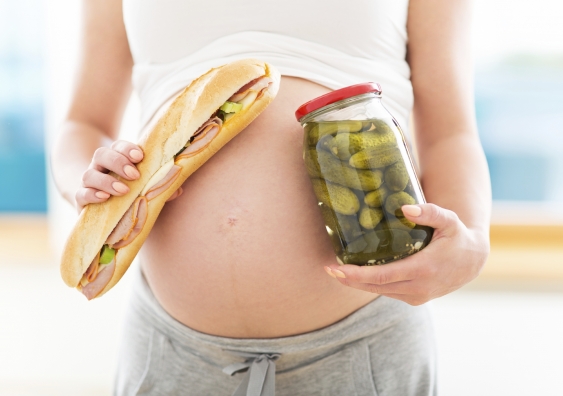Chemical messengers: how pregnancy hormones affect the body
Staying healthy during pregnancy is important for both mother and child, writes Tony O'Sullivan.
Staying healthy during pregnancy is important for both mother and child, writes Tony O'Sullivan.

The breasts go first, and then the waist and then the butt. Nobody ever tells you that you get a butt when you get pregnant. – Elle Macpherson.
Multiple hormones produced by the mother, placenta and the foetus drive and coordinate the amazing biological changes and development of the baby that occur with conception, foetal growth and birth.
The word “hormone” is derived from the Greek word “hormon” which means “to urge on or that which sets in motion”. As any mother will tell you, the nine months of pregnancy is quite a journey.
During pregnancy, there are significant changes in the mother including changes to heart and kidney function, increases in body fat and fluid retention, changes in skin and psychological changes, as well as the obvious changes to the uterus and breasts.
Basically, all organs in the mother’s body are required to increase their workload to help with the pregnancy and the development of the baby.
These maternal changes are due to hormones being produced by the mother’s glands and the placenta – hormones such as oestrogen, progesterone, prolactin, renin, human chronic gonadotropin and human placental lactogen.
We now understand that if a baby develops in an unhealthy uterine environment, this can not only lead to problems at birth, but also increased risks of diseases, such as diabetes and heart disease, when the baby becomes an adult.
The more we understand the changes to the mother’s body, the better the advice will be from health professionals, and the more medical treatment can help when diseases occur, all leading to better outcomes for mother and baby.
Throughout pregnancy there is an increase in the amount of blood the heart pumps each minute. Dilation and relaxation of blood vessels, due to hormones such as oestrogen and relaxin, results in a lowering of blood pressure. There is also an increase in kidney blood flow.
Activation of the renin-angiotensin system, an important system to control normal fluid balance and blood pressure, leads to fluid retention in the pregnant mother. This can manifest as ankle and hand swelling. Despite more fluid being retained, the mother’s blood pressure normally does not rise. In fact, it falls due to the dilation of blood vessels as discussed above.
Increases in total blood volume and circulating red cells occur throughout pregnancy. This is due to a stimulation of red cell formation caused by increases in erythropoietin, a hormone secreted by the kidney that controls the number of red cells circulating in the blood.
As pregnancy progresses some women notice pigmentation of the skin, often involving the face, called melasma, which fades away generally a few months after the birth.
Melasma is due to increased skin pigmentation produced by the pigment-forming cells (melanocytes).
Small dilated skin blood vessels, thought to be related to the high level of oestrogens, can develop during pregnancy and regress after birth.
In preparation for lactation (breast feeding), breast tissue, including milk ducts, areola and nipples, increases in size due to hormones such as oestrogen, prolactin and human placental lactogen.
High oestrogen and progesterone levels during pregnancy inhibit any significant lactation. However, some women notice nipple discharge (colostrum) towards the end of pregnancy.
Following delivery, when levels of hormones such as progesterone fall, breast milk production increases and lactation occurs (the mother’s milk comes in). Prolactin levels remain high during lactation due to ongoing stimulation from suckling.
Placental hormones such as human chronic gonadotropin (the hormone that is detected in urine tests to confirm a pregnancy), human placental lactogen, placental growth hormone, oestrogen and progesterone are produced to maintain the pregnancy.
These hormones encourage foetal and uterine growth, encourage transfer of maternal nutrients for foetal fuel metabolism, and increase blood supply across the placenta to the foetus.
About half the mother’s weight gain during pregnancy is due to increases in body fat, a fuel source required for the increased demands of pregnancy and in preparation for breastfeeding, although the hormonal mechanisms for these changes are not completely understood.
The ideal weight to gain during pregnancy has recently been debated, especially in women who are overweight pre-pregnancy. Too much fat gain in pregnancy can lead to poor maternal and baby outcomes, so careful dietary advice and planning are required. It may be that women store fat more efficiently in pregnancy, so pregnant women don’t really need to be “eating for two”.
Maternal mood changes during pregnancy can range from joy to anxiety to depression related to the expectations of the pregnancy, physical changes, tiredness, difficulty sleeping and worry about the pregnancy, birth and the early post-birth months.
Fluctuating hormone levels can also have impacts on mood. Post-partum depression is well recognised and it should be watched for and managed appropriately. However, some women can develop symptoms suggestive of depression during pregnancy. Medical help should be sought if these appear.
Thyroid function alters especially in the first trimester in normal pregnancy and thyroid disease is not uncommon in pregnancy. Maternal iodine requirements increase, leading to pregnant women being advised to take iodine supplements.
Resistance to insulin, the hormone that helps glucose (sugar) metabolism, leads to glucose intolerance in the second half of pregnancy. Gestational diabetes occurs in up to 8% of pregnancies.
Significant changes occur to maternal biology, metabolism and body composition during pregnancy. Maintaining optimal maternal health is very important for a healthy outcome for mother and child.
Tony O'Sullivan is Head, Department of Endocrinology, St George and Sutherland Hospitals, and UNSW Medicine.
This opinion piece was first published in The Conversation.